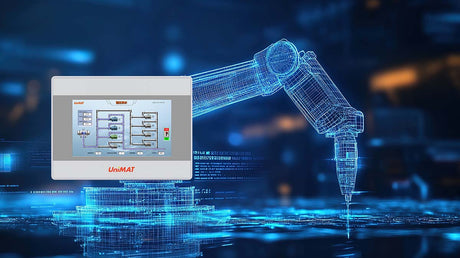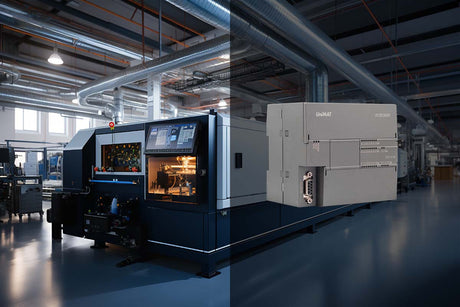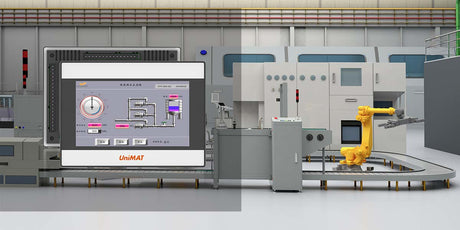When you walk into a modern factory and look at the high-speed production lines,have you ever wondered what is behind all this?Are there countless relays working hard,or are there small PLCs calmly directing?

If you are still using a relay control system,it is like riding a bicycle on a highway.You may reach the end,but the efficiency and experience are hard to describe.Today we will talk about why PLC control systems can easily surpass relay control systems and become the darling of industrial automation.
Control method:evolution from complexity to flexibility
What is the essence of a relay control system?The mountains of physical contacts and wiring make people have to make a big move if they have a slight modification demand.PLC is completely different.It uses program control.Just a few clicks of the mouse in the software can easily achieve logical adjustments.
Not only that,the number of contacts of PLC is theoretically unlimited,even if you have unrestrained control needs,it can easily meet them.And what about relays?Adding contacts is like working overtime-it costs money and effort,and no one likes it.
Working mode:the king of anti-interference ability
When the relay is working,various electromagnetic noises and mechanical jitters will make you doubt your life in minutes.PLC adopts serial working mode,which is naturally anti-interference.
It is like in a noisy station,the relay is like an ordinary person shouting loudly,while the PLC is a technical nerd wearing noise-canceling headphones,always as stable as Mount Tai.Electromagnetic interference,dust and other problems in industrial environments are simply drizzle for PLC.
Control speed:from"turtle"to"cheetah"
When it comes to speed,the relay system is like a postman,while the PLC is fiber-optic broadband.The relay completes the control through physical contact action,which is so slow that it makes people want to yawn.The contacts of the PLC are actually triggers,and the instruction execution time is in microseconds.
In other words,the relay is still slowly turning the switch,and the PLC has already completed thousands of operations.This speed advantage is undoubtedly a"dimensionality reduction blow"for complex control that requires precise timing.

Timing and counting:precise time controller
Industrial control cannot do without timing and counting functions,while the timer of the relay is often external,with very limited accuracy and functions.PLC is completely different.It uses semiconductor integrated circuits as timers,and the clock pulse is provided by a crystal oscillator,with high delay accuracy and wide range.
Not only that,PLC also has a counting function that the relay system does not have at all,which can record production data in real time and meet the high demand for digitalization in modern industry.This is like a relay can only see the clock,while PLC is already a smart watch with much more powerful functions.
Reliability and maintainability:the guardian of high technology
The reliability of the relay system depends half on luck and half on diligent maintenance;loose wiring and aging contacts make people collapse.
PLC uses microelectronic technology,has high reliability,and has its own self-checking function,which can detect fault points in time and alarm prompts.When maintaining,you only need to replace the module,which is simple and fast.
The maintenance of relays is like repairing an old car,which is time-consuming and expensive,making people say"it makes sense to eliminate it in the era".
The advantages of PLC control system make it the mainstream choice for industrial automation.Whether it is flexibility,anti-interference ability,control speed,or timing counting accuracy and reliability,it has surpassed the relay control system with obvious advantages.

Of course,we are not going to completely deny the relay.It still has a place in certain specific occasions,but with the development of technology,its scope of use is gradually narrowing.
If you are still struggling with which control system to choose,you might as well ask yourself:Do you want your production line to have modern intelligent advantages,or continue to rely on the old system?After all,the future of industrial automation is already calling for more efficient and reliable solutions.Do you choose to stand on the trend,or become a"nail household"abandoned by the times?









